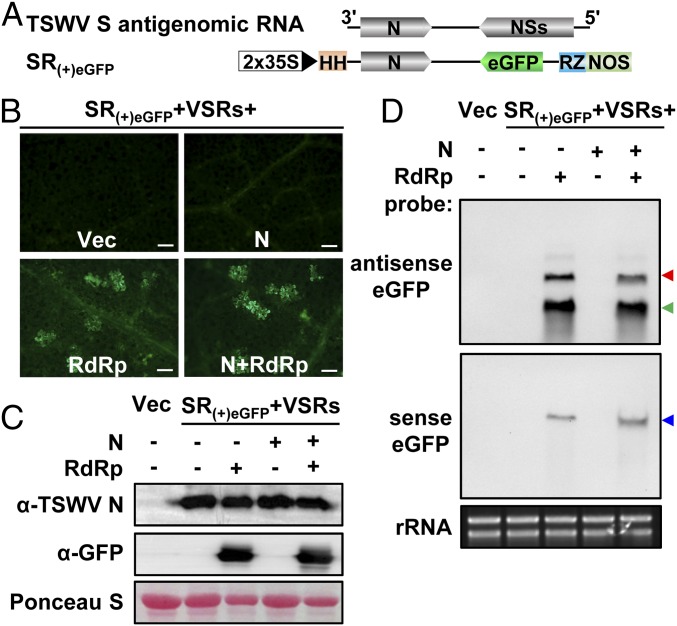Fig. 3.
Development of S(+)-agRNA minireplicon system in N. benthamiana. (A) Schematic representation of the TSWV SR(+)eGFP minireplicon. Plus sign (+) and 3′ to 5′ designation represent the positive (antigenomic) strand of S RNA. The NSs gene of TSWV S antigenomic RNA was replaced by eGFP. Antigenomic RNA strands of the SR(+)eGFP minireplicon are transcribed from a double 35S promoter (2×35S) and flanked by an HH ribozyme and HDV ribozyme (RZ) sequence. (B) Foci of eGFP fluorescence in N. benthamiana leaves coexpressing TSWV SR(+)eGFP with pCB301 empty vector (Vec), N, RdRp, or N+RdRp by agroinfiltration. Agroinfiltrated leaves were photographed at 3 dpi using a fluorescence microscope. (Scale bars: 400 μm.) (C) Western immunoblot detection of N and eGFP protein synthesis in the leaves shown in B using N- and GFP-specific antibodies, respectively. Ponceau S staining was used as a protein loading control. (D) Northern blot analysis of the replication and transcription of SR(+)eGFP minireplicon in N. benthamiana coexpressed with empty vector (Vec), N, RdRp, or both. Genomic RNAs (red arrow), antigenomic RNAs (blue arrow), and subgenomic-length eGFP mRNA transcripts (green arrow) were detected with DIG-labeled sense and antisense eGFP probes, respectively. Ethidium bromide staining was used as RNA loading control.

